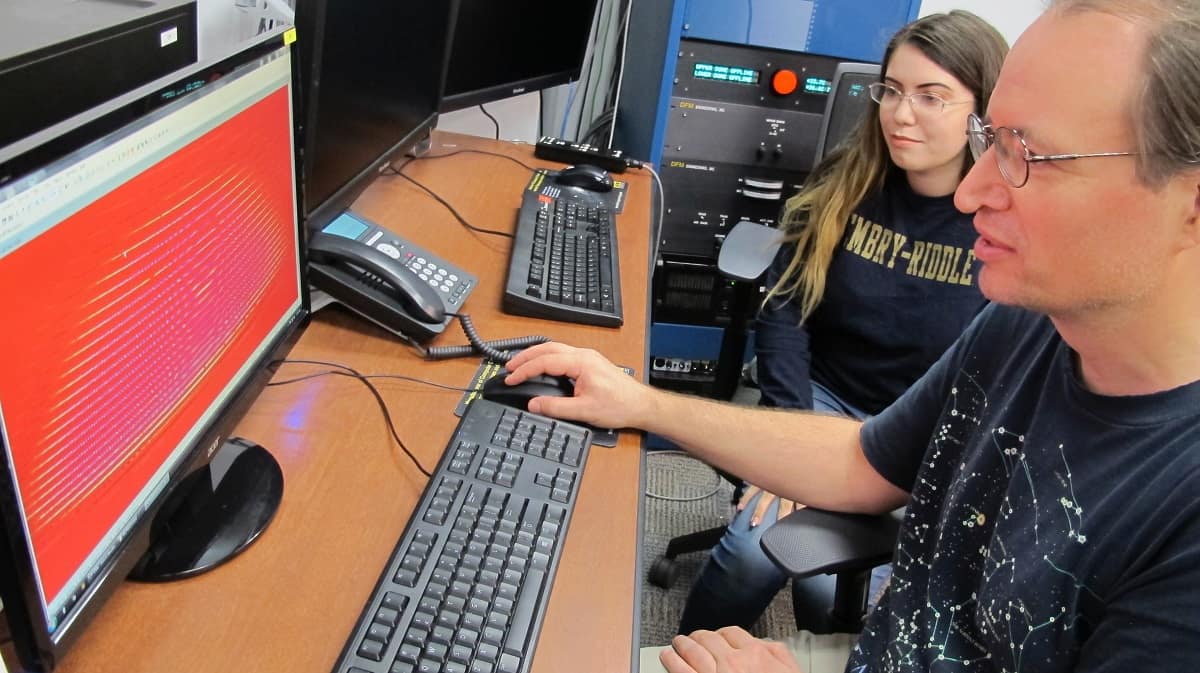New Equipment Enhances Research on Stars

And what may seem just like colorful lines on a computer screen inside the control room are actually spectral lines that reveal chemical elements in a star and its surrounding atmosphere; the temperature of a star, motion and rotational speed.
A recent upgrade to equipment connected to the telescope is now providing enhanced data about the stars. A new and improved collimator inside the high-resolution spectrograph, which narrows the beam of light waves, was added allowing more detailed viewing.
Light collected by the telescope is transmitted via fiber optics to the high-resolution échelle spectrograph with the images appearing in the nearby control room. The spectrograph obtains and records an astronomical spectrum or graph of light showing the brightness of a star at various wavelengths. The advantage of the Embry-Riddle spectrograph is that it is not physically attached to the telescope, which reduces stress and vibrations so data being collected is more precise.
“A spectrum is a bar code of the star,” said Dr. Jason Aufdenberg, associate professor of Physics and Astronomy and undergraduate program coordinator for Astronomy and Astrophysics. “With the upgrade, we are able to have a better average, for example, of how fast the star is moving. Since we will be able to see more colors in the spectrum, we will have more diagnostic information about a star’s surface.”
Allison Acosta, an Astronomy and Astrophysics junior, has been analyzing data from the spectral lines of the star system Sirius, the brightest star in Earth’s night sky. The data from Sirius will help her in analyzing the amount of elements in similar stars.
“I want to study anything beyond our solar system – black holes, interstellar gas, pulsars, exoplanets, star clusters, dark matter, the origins of our universe and so much more,” said Acosta, who hopes to continue research for an aerospace company when she graduates. “We know a lot, but there is so much more to find out.”
Another project beginning this fall has Aufdenberg and students working on measuring the rotational period of the star Epsilon Eridani to complement NASA’s Transiting Exoplanet Survey Satellite (TESS) Mission. TESS was launched in April to search for thousands of unseen planets outside the solar system, known as exoplanets, and monitor the brightness of more than 200,000 stars. The closest known planetary system to Earth at a distance of 10.5 light years, Epsilon Eridani is the fifth-brightest star in the southern constellation of Eridanus.
Throughout the year, the public has an opportunity to view planets, stars and distant galaxies through Embry-Riddle’s 1-meter telescope during free Astronomy Open Houses. The next Open House will be on Nov. 16.

 Deborah Circelli
Deborah Circelli